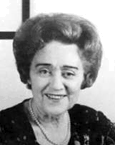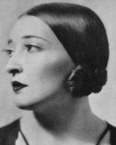Posted by Bob Sherman, April, 2010
Once again, there are excting new developments and some glad tidings:
• The first-ever release of NR’s November 21, 1947 Carnegie Hall Recital, predicted in our previous newsletter, has materialized, the album notes including an affectionate remembrance by Gary Graffman. On the program: a Handel Suite, Sonatas of Mozart and Chopin, the world premiere (see below) of Samuel Barber’s Four Excursions, Six Scriabin Etudes and much more. You’ll find a link to the 2-CD set in the Recordings section.
• Gary Lemco, writing for Audiophile Audition, cites “the fascinating, entirely catholic taste of this extraordinary pianist, who always sought out new scores and novel modes of expression.” He goes on to describe each work in detail, from the “polished, infectious” Handel Suite to Scriabin’s D# Minor Etude, which “Reisenberg takes at blazed speed, the resulting fires surging like some Dantesque vision. The audience explodes long before the last chord dies away.”
You can read the entire review at http://www.audaud.com/article?ArticleID=6780.
• “Time has not diminished these performances,” wrote Dr. Phil Musie for the Audio Video Club of Atlanta, “but rather enhanced them, as the artist’s style of playing was absolutely timeless. Chopin’s Sonata #3 was previously found on Bridge 9276 A/D and is included here again to give a complete picture of the 1947 recital. Since the earlier 4-CD Box contains 300 minutes of the most exalted Chopin playing you will ever hear in your life, only the most incurably malcontent will want to complain.” Dr. Phil goes on to note that “the digital remasterings (by Seth Winner) are so good, the sound belies the 60 years + age of the sonic originals.”
• Auditions were held this past January at the Mannes College of Music, and the winner of the biennial N Recital Award was Vlada Vassilieva, a Mexican pianist of Russian descent, who studies in the graduate program at Mannes with Pavlina Dokovska. Ms. Vassilieva will make her New York debut November 1 at Merkin Hall. A happy sidebar: Morey Ritt, a member of the jury (along with pianist Ann Schein, Mannes Dean Joel Lester and yours truly), was so impressed that she invited the winning artist to play for her piano class at Queens College.
I am, meanwhile, deeply indebted to visitors to our website for sundry corrections, additions and some altogether new information.
• Perhaps the most astonishing revelation came from George Murnu, who tells us that an acetate of Nadia Reisenberg’s Carnegie Hall performance (1/14/44) of the Franck Sonata with the legendary violinist Georges Enesco exists in Romania.
“Obviously Enesco was well past his prime,” George says, “yet it was a wonderful partnership with Ms. Reisenberg.”
As a witness on that occasion (I was the 12-year old page-turner), I can now reveal that the always gracious Enesco, not needing music, but wanting to ensure that nobody mistook the Sonata as a violin solo with accompaniment, took the score on stage with him, but placed it on the stand upside down.
• Equally astonishing — and hitherto unknown to anybody, including NR herself, apprently, since there was no mention in the program — is that her Carnegie Hall performance of Samuel Barber’s “Four Excursions” was actually the world premiere of the complete set. This startling fact comes from Pierre Brévignon, a French writer currently working on a biography of Barber. “Browsing the internet,” he says, “I found the Bridge CD featuring Nadia Reisenberg’s Recital in 1947. This discovery is quite surprising since the complete Excursions cycle (i.e. all four piano pieces) is supposed to have been premiered one year later by Jeanne Behrend. That makes Ms. Reisenberg the first pianist to perform the complete set after the premiere of the first three pieces by Vladimir Horowitz.” Merci bien, M. Brévignon.
• Timothy Kendall, in the course of expressing delight at having discovered the website (“your mother’s Rachmaninoff recordings was one of the joys of my childhood,”he wrote; “I am so glad I can buy a copy on CD”), pointed out that the listing of Tchaikovsky’s “Five Piano Pieces” had an incorrect Opus; it should be #3. Oh well, I never was any good at math.
• I was proud and pleased to get a note from Louis Pine, historian of Joseph Schillinger’s life and work, praising what he dubbed “your loving tribute to your mother and aunt on the Nadia Reisenberg / Clara Rockmore website.” On the other hand, I was thoroughly abashed by Lou’s reminder that I had omitted two outstanding artists from the NR student list: Mel Powell, then a brilliant jazz pianist and arranger for Benny Goodman, later the Pulitzer Prize-winning composer; and Teddy Wilson, the elegant keyboardist in many of Goodman’s groups. Mother was always astonished at Teddy’s incredible dexterity and feathery touch at the piano, and considered it a major triumph when she finally got him to dig deep into the keys for Beethoven.
• On the Clara front, a touching e-mail arrived from Cathe Jones. “I just watched Steve Martin’s film (Theremin – An Electronic Odyssey), and was so touched by CR’s skills — she was an opera star with her hands, the Cecilia Bartoli of the instrument. My husband is Mike Jones, the jazz virtuoso, and he was just as blown away…”
• Mention of CR and probably an audio excerpt will be part of theremin segment on Public Television’s popular “History Detectives” series. A broadcast date has not been set yet, but the new season begins in June.
• Who needs music? Phyllis Magidson, Curator of Costumes and Textiles, will include CR’s red silk jersey concert gown, and possibly some interview videos, within “Notorious and Notable: Fashionable Women of the Twentieth Century.” The exhibition, opening September 13 at the Museum of the City of New York, will feature “representative garments and fine jewelry of New York City luminaries.”
• Several visitors to our site took note of CR’s 99th birthday on March 9, perhaps the most poignant message arriving from former NR student Elena Klionsky: “Today I thought of Clara and said a prayer for her. I remember she loved everything in red, so I always made sure to bring her red flowers. She is not forgotten, she is missed…” In a later e-mail, Elena added a warm note about NR. “I was on a jury at a piano competition with Fedora Horowitz. She is a Romanian pianist who met Nadia in Israel, and when she moved to the U.S., Nadia helped her a great deal to settle down and was teaching her for a long time. When I told her that I studied with Nadia, she just looked at me and hugged me. So, once more this showed me that Nadia was loved so much, and lives on in her students all over the world.”
As we look toward the CR centennial in 2011, a number of intriguing possibilities are being explored. Prime among them, another Bridge CD, this one documenting CR and NR’s live studio appearance on my “Listening Room” program over WQXR Radio. In addition to several favorites from the sisters’ previously recorded repertoire, are their never-before released live performances of music by Bach and Glinka as a trio with the superb violinist Erick Friedman.
• As noted in my previous newsletter, David McGill, principal bassoonist of the Chicago Symphony, is working on a combined CR biography and performance analysis. In the process of his researches, he uncovered some fascinating documents from Clara’s pre-theremin days as a violinist. Among them is a notation on her 1922 examination sheet for admission to the Juilliard School (then the Institute of Musical Arts) from director Frank Damrosch, calling her “very talented, very promising.” The following year, Clara’s primary teacher at Juilliard, the renowned Franz Kneisel, noted her “excellent musical talent and mental qualities,” while his 1924 report calls her work “excellent in every respect; application excellent, programs perfect.”
• Sergey Teterin, a media artist and curator of the Cyland Art Center in St. Petersburg, is working on a Russian translation of Clara’s theremin instruction booklet, and hopes to develop a Russian edition of what he calls “the brilliant video documentary, ‘Clara Rockmore – World’s Greatest Theremin Virtuosa’.” (This film originally aired on Public Television’s “Camera Three” series, then was restored by Robert Moog; it’s available through the Moog Foundation.)
• A final reminder that tax-exempt donations to the Nadia Reisenberg / Clara Rockmore Foundation are always welcome, and will help fund such other hoped-for events as a CR centennial exhibition at the University of Maryland, and the CD release of more NR performances, perhaps the Brahms Viola Sonatas with Paul Doktor and chamber music with members of the Juilliard String Quartet.
• If you want to suggest corrections or additions to the information here, know of any other NR students I may have overlooked, or just want to share your thoughts and ideas, I eagerly await your e-mail comments at rsher762@aol.com.


